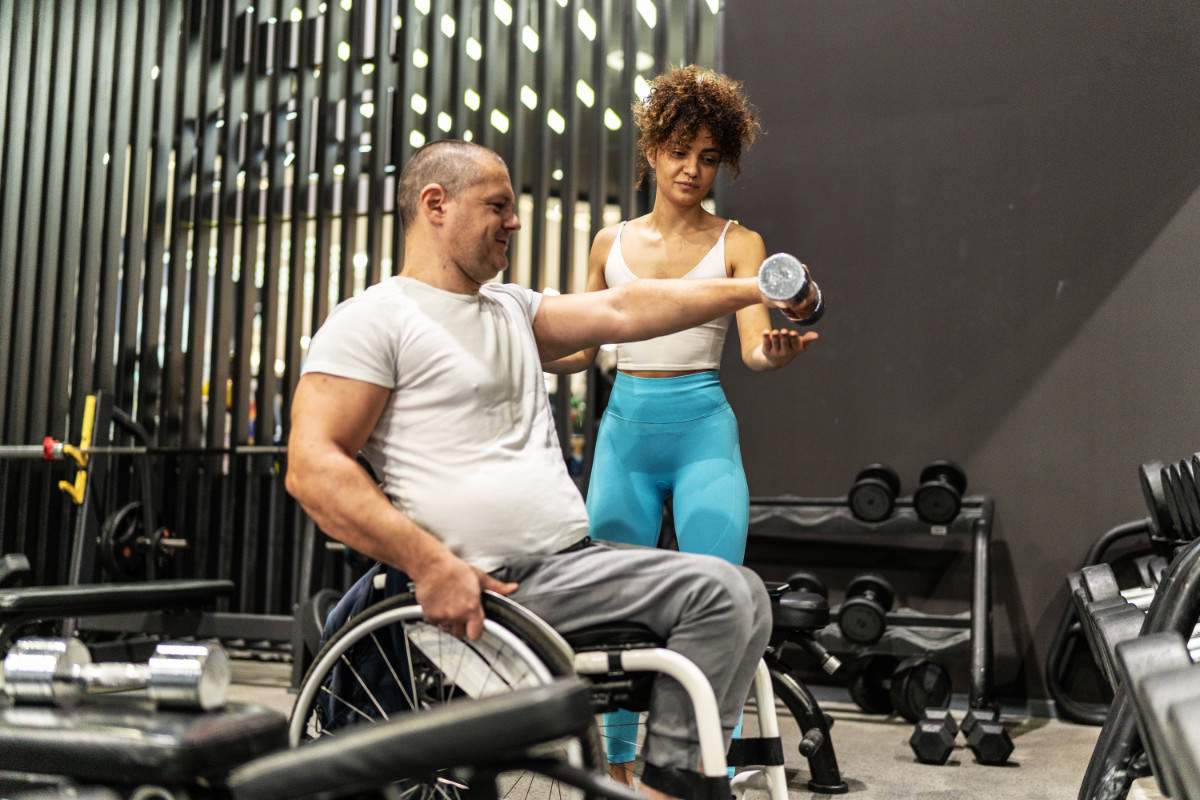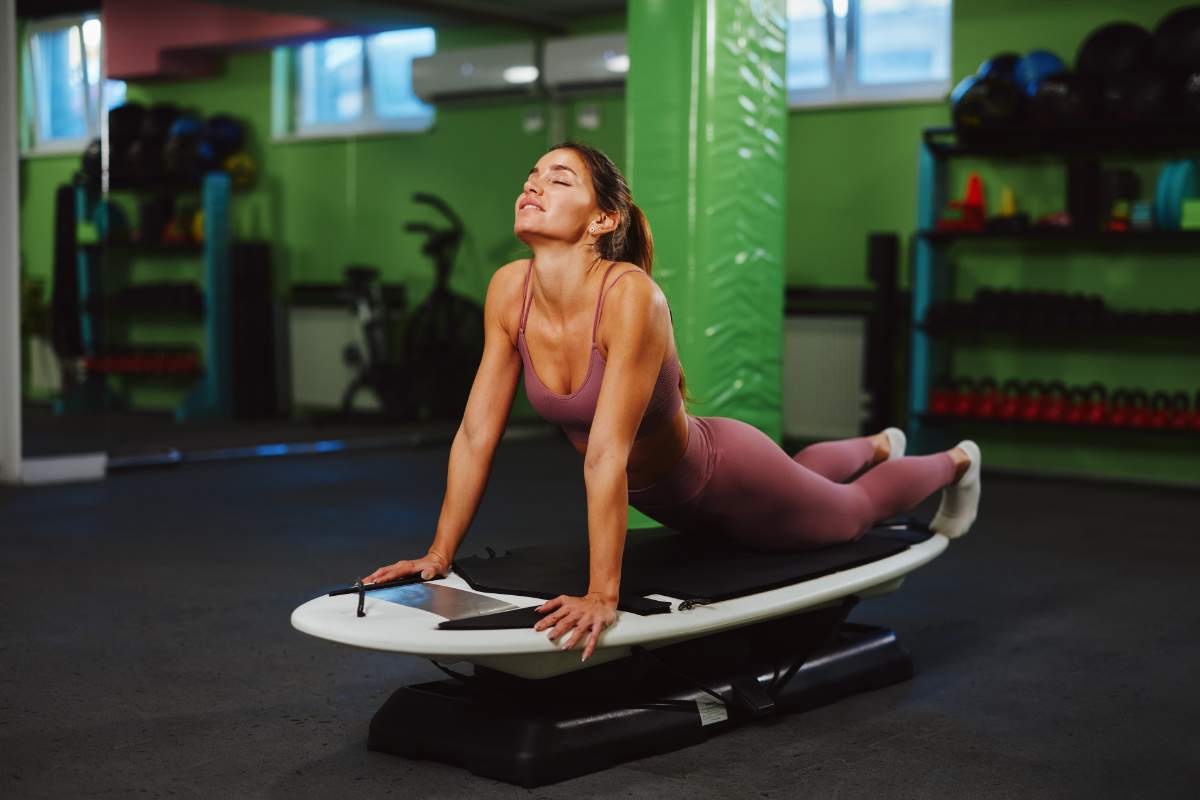Finding the right fitness support when you have a disability can feel overwhelming. You want someone who understands your specific needs, knows how to work safely with your condition, and can help you reach your fitness goals. This guide answers the most common questions about working with disability-focused trainers in Melbourne.
What disability trainers do
A personal trainer for individuals with disability creates customised exercise programs that work around your specific physical, cognitive, or sensory challenges. They assess your current abilities, understand your medical conditions, and design workouts that are both safe and effective for your body.
These trainers work with people who have conditions including cerebral palsy, spinal cord injuries, autism, Down syndrome, vision or hearing impairments, and chronic health conditions. According to the National Disability Insurance Scheme (NDIS), over 4.4 million Australians live with disability, and many can benefit from specialised fitness training.
The trainer’s job includes teaching proper exercise technique, monitoring your progress, adjusting programs as you improve, and working alongside your medical team when needed. They focus on building strength, improving mobility, increasing independence, and helping you feel confident in your body.
9 Steps To Shed 5-10kg In 6 Weeks
Includes an exercise plan, nutrition plan, and 20+ tips and tricks.
Download FreeMelbourne training costs
Personal training for people with disability in Melbourne typically costs between $80 and $150 per session. Most sessions run for 30 to 60 minutes depending on your fitness level and goals.
Typical price ranges
- One-on-one sessions: $90–$150 per hour
- Small group training: $35–$60 per person per session
- NDIS-funded sessions: Rates vary but typically align with NDIS pricing guidelines
- Package deals: $400–$600 for 5 sessions (saving $50–$100)
Many trainers in Melbourne suburbs like Elwood, St Kilda, and Port Melbourne offer NDIS-funded services. If you have an NDIS plan with capacity building or improved health and wellbeing funding, you can use this to cover your training costs.
Can NDIS pay for PT?
Yes, NDIS can fund personal training sessions under specific budget categories. Your training must align with your NDIS goals and help you build capacity or improve your health.
Relevant NDIS budgets
- Improved Health and Wellbeing
- Improved Daily Living Skills
- Capacity Building – Health and Wellbeing
You’ll need to show how the training helps you achieve goals in your NDIS plan. For example, if your goal is to improve strength for daily tasks like getting in and out of bed, or to manage weight for better health outcomes, personal training directly supports these objectives.
The NDIS pays trainers directly when they’re registered providers, or you can use plan management or self-management to pay your trainer and claim reimbursement.
Trainer qualifications
Your trainer must hold a Certificate III or IV in Fitness as the minimum qualification in Australia. However, trainers working with disability should have additional specialised training.
What to look for
- Certificate III or IV in Fitness (mandatory)
- Exercise and Disability training or certification
- First Aid and CPR certification (updated every 3 years)
- NDIS Worker Screening Check
- Experience working with your specific condition
Some trainers also have qualifications in exercise physiology, physiotherapy, or occupational therapy. These additional credentials mean they understand medical conditions more deeply and can work more effectively with your healthcare team.
In Victoria, personal trainers don’t need to register with a specific body, but reputable trainers belong to professional organisations like Fitness Australia or Physical Activity Australia. These memberships require ongoing education and professional development.
Finding a trainer
Start by asking your medical team for recommendations. Your GP, physiotherapist, or occupational therapist often knows trainers who specialise in disability fitness and have good reputations.
Where to search
- NDIS provider directories
- Fitness Australia’s “Find a Trainer” tool
- Local gyms in Elwood, St Kilda, and surrounding suburbs
- Disability support organisations
- Online reviews and testimonials
When you contact potential trainers, ask about their experience with your specific condition. A trainer who has worked with five people with cerebral palsy will understand your needs better than someone who has only read about it.
Book a trial session before committing to a package. This lets you see if the trainer’s communication style works for you, if they understand your needs, and if you feel comfortable working with them.
Your first session
Your first session focuses on assessment, not intense exercise. The trainer will ask about your medical history, current fitness level, medications, and goals. They’ll test your strength, flexibility, balance, and endurance to understand your starting point.
Typical assessment steps
- Health screening and medical history review
- Movement assessment to see how your body moves
- Strength and flexibility testing
- Discussion of your goals and concerns
- Creation of your personalised program
Bring any medical reports, letters from your doctor, or information about your condition to this first session. The more your trainer knows, the better they can design your program.
The trainer should explain every exercise, demonstrate proper form, and check that you understand before you try it. They’ll watch closely to ensure you’re moving safely and adjust exercises if something doesn’t work for your body.
How often to train
Training two to three times per week produces the best results for most people with disability. This frequency allows your body to adapt and grow stronger while giving you adequate recovery time between sessions.
Research shows that people with disability who train at least twice weekly see significant improvements in strength, mobility, and independence. A 2021 study found that consistent training helps reduce fatigue, improves mental health, and increases confidence.
What determines frequency
- Your current fitness level
- Your specific disability or condition
- Your goals (weight loss, strength, mobility)
- Your energy levels and recovery ability
- Your NDIS funding allocation
Some people start with one session per week and gradually increase as they build fitness. Others might train three to five times weekly if they’re preparing for a specific event or have ambitious goals.
Home vs gym
You can absolutely train at home. Many disability-focused trainers offer mobile services and come to your house with portable equipment. This option works well if you have mobility challenges, feel more comfortable at home, or don’t have accessible gym options nearby.
Home training advantages
- No travel required
- Train in a familiar, comfortable environment
- Use your own bathroom and facilities
- More privacy
- Often more affordable (no gym membership needed)
However, gyms offer benefits too. They have specialised equipment, accessible facilities, and the social aspect of seeing other people exercise. Some Melbourne gyms have excellent accessibility features including wheelchair-accessible equipment, hoists, and trained staff.
The best choice depends on your preferences, mobility, and goals. Discuss both options with your trainer to decide what works for your situation.
Expected results
You can expect noticeable improvements in strength, energy, and daily function within 6 to 12 weeks of consistent training. Most people see changes in how they feel before they see visible physical changes.
Realistic outcomes
- Increased strength for daily tasks (lifting, carrying, moving)
- Better balance and reduced fall risk
- Improved cardiovascular fitness and less fatigue
- Greater independence in daily activities
- Better mental health and confidence
- Weight management and improved body composition
A 2018 Australian study found that people with disability who engaged in regular strength training improved their functional capacity by 25% over 12 weeks. They reported feeling more capable, less dependent on others, and more confident in their bodies.
Your specific results depend on your starting point, consistency, and the type of training you do. Someone who trains twice weekly will see faster progress than someone who trains monthly.
Frequently asked questions
Do I need a doctor’s clearance before starting?
Yes, get medical clearance from your GP before beginning any exercise program. Your doctor can identify any precautions your trainer needs to know and confirm that exercise is safe for your condition.
What if I can’t do the exercises my trainer suggests?
Tell your trainer immediately. Good trainers always have alternative exercises and modifications. Every exercise can be adapted to work for your body and ability level.
Can I train if I use a wheelchair?
Absolutely. Many exercises can be done from a seated position, and trainers can adapt programs for wheelchair users. Strength training, boxing, resistance bands, and modified cardio all work well from a wheelchair.
Will training help with my chronic pain?
Exercise often reduces chronic pain when done correctly. Strength training and gentle movement can decrease pain levels, improve function, and reduce reliance on pain medication. Always work with your medical team alongside your trainer.
How long until I see results?
Most people notice increased energy and better mood within 2 to 3 weeks. Strength improvements become noticeable around 4 to 6 weeks. Visible physical changes typically appear after 8 to 12 weeks of consistent training.
What should I wear to training?
Wear comfortable, loose-fitting clothes that allow you to move freely. Supportive athletic shoes are important unless your condition requires specific footwear. Bring water and any medical devices you need.
Finding your match
Working with a qualified trainer who understands disability creates real, lasting changes in your strength, independence, and quality of life. The right trainer doesn’t just count reps – they become a partner in your health journey, celebrating your wins and adapting when challenges arise.
Melbourne has excellent trainers who specialise in disability fitness, particularly in accessible suburbs like Elwood where many health and fitness professionals practice. Take time to find someone who matches your needs, communicates well, and makes you feel capable.
Your disability doesn’t define what you can achieve with your fitness. With the right support, proper programming, and consistent effort, you can build a stronger, more capable body that helps you live the life you want.


